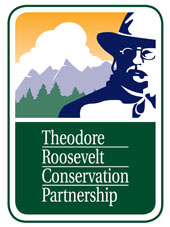Sportsmen cautiously optimistic regarding management plan for sustaining populations of the game bird on public lands in central Wyoming.


Washington, DC -(Ammoland.com)- A new Bureau of Land Management plan for public lands important to greater sage-grouse makes progress toward landscape-scale planning efforts to conserve populations of the imperiled game bird, say sportsmen.
The Lander, Wyoming, resource management plan is the first RMP to be released that affects sage-grouse habitat and attempts to balance conservation measures with multiple uses of these public lands. The plan employs measures consistent with the state of Wyoming’s core area strategy, developed cooperatively by the state, counties, federal agencies and a variety of stakeholders and generally viewed as a balanced approach to conserving sage-grouse habitat while enabling economic activities like energy development.
“The Lander resource management plan appears to be a step in the right direction for sage-grouse conservation in multiple use landscapes,” said Ed Arnett, director of the Center for Responsible Energy Development at the Theodore Roosevelt Conservation Partnership. “However, the plan is not perfect, and it does seem to have missed an opportunity to employ stronger measures for long-term protection of core habitat.”
“Unfortunately, the Lander plan still employs some practices not supported by science,” noted Arnett, “for example, the use of quarter mile buffers around leks outside of core habitat. We are hopeful future plans adhere closely to the most current science.”
The U.S. Fish and Wildlife Service faces a September 2015 deadline to decide whether to list the sage grouse under the Endangered Species Act. To prevent the bird’s listing, the BLM and states must produce sage-grouse conservation plans that can credibly recover bird populations. The Lander plan is particularly important because almost 100 percent of the planning area constitutes habitat for sage-grouse, with 80 percent being “core habitat” that harbors large numbers of birds.
“The bottom line comes down to implementation of the Lander plan and commitments to sagebrush ecosystem conservation that will actually improve sage-grouse populations,” said Miles Moretti, president and CEO of the Mule Deer Foundation. “We need to see how the plan manifests into real conservation actions that will pass muster with the service during its listing decision.”
The plan calls for the BLM to prioritize development away from core habitat, but it doesn’t necessarily take that habitat off the table for development in the future.
“Protecting more core habitat would have been preferred, so we expect the BLM to indeed prioritize development away from core sage-grouse habitat as it implements the Lander plan,” said Terry Riley, director of conservation for the North American Grouse Partnership.
While commending the positive aspects of the Lander RMP and emphasizing some shortcomings, sportsmen also are calling for the improvement of plans elsewhere.
“It is our hope that the plans developed by other BLM offices and the states will increase long-term protection of habitat for sage-grouse and address all threats to the bird,” said Riley. “This is the only way to avoid listing the bird under the Endangered Species Act in 2015.”
About The North American Grouse Partnership
The North American Grouse Partnership is a sportsman/conservation organization dedicated to the conservation of North American grouse, their habitats and kindred species.
About The Mule Deer Foundation
The Mule Deer Foundation is a sportsman/conservation organization dedicated to the conservation of mule deer, black-tailed deer and their habitat.
About The Theodore Roosevelt Conservation Partnership
Inspired by the legacy of Theodore Roosevelt, the TRCP is a coalition of organizations and grassroots partners working together to preserve the traditions of hunting and fishing.
